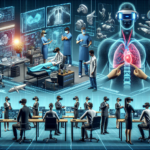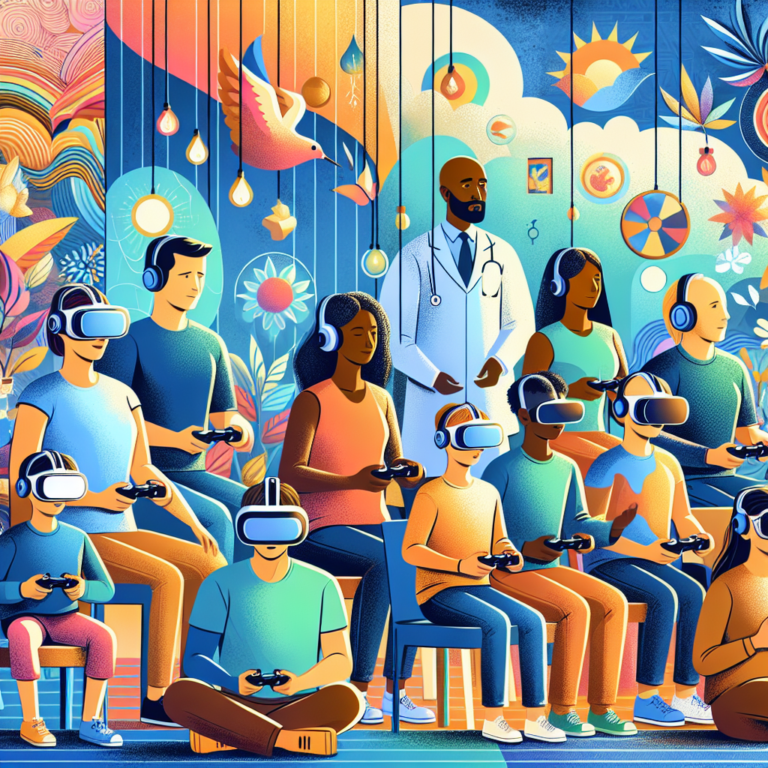Transforming Mental Health: The Future of Affordable Virtual Reality Therapy 🎮
The Rise of Virtual Reality in Therapy
In recent years, we’ve witnessed a burgeoning interest in utilizing Virtual Reality (VR) technology for therapeutic purposes. As mental health challenges continue to rise globally, innovative solutions like VR therapy have begun to take center stage. Imagine a world where high-quality VR headsets are not just luxury items for gamers, but essential tools in mental health care, available to everyone.
What is Virtual Reality Therapy?
Virtual Reality Therapy refers to the application of VR technology to treat various psychological issues and disorders. Through immersive experiences, VR can help patients confront their fears, manage anxiety, and overcome traumatic memories in a safe and controlled environment. Here’s how it generally works:
- Immersive Environments: Patients are placed in computer-generated environments designed to simulate real-world scenarios.
- Exposure Therapy: Gradual exposure to the source of fear or anxiety, allowing patients to process and eventually cope with their feelings.
- Real-Time Feedback: Patients can receive immediate feedback from the VR world, often guided by trained mental health professionals.
This innovative approach has shown promising results, with numerous studies highlighting its efficacy for conditions such as PTSD, phobias, and social anxiety.
Breaking Down Barriers: Affordability and Accessibility
The greatest challenge in making VR therapy widely available is the cost associated with VR equipment. High-end headsets can run into hundreds of dollars, excluding many individuals from accessing these life-changing therapies. But what if affordable VR headsets became widely available?
The Technological Leap
Recent advancements in technology have made it feasible to produce lightweight, high-quality VR headsets at lower prices. Here’s what affordable VR headsets could mean for therapy:
- Increased Access: Lower prices would allow more individuals, regardless of economic background, to access VR therapy.
- Greater Adoption: Mental health professionals could adopt VR therapy into their practices without the financial burden of expensive equipment.
- Public Health Improvements: Increased accessibility means broader community wellness, bolstering public health initiatives.
Imagine a world where schools, community centers, and clinics are equipped with affordable VR gear, offering universally accessible therapy to those in need.
Changing Lives: The Impact of Accessible VR Therapy
With affordable VR therapy, the implications for mental health care could be transformative. Here’s how this accessibility could change lives:
- Empowering the Youth: Children and teenagers struggling with anxiety or trauma could benefit immensely from the immersive experiences provided by VR therapy.
- Reducing Stigma: As VR therapy becomes commonplace, mental health discussions will become more normalized, reducing the stigma surrounding seeking help.
- Tailored Solutions: Customizable therapy programs can cater to individual needs, fostering a more personalized healing process for users.
Picture adolescents wearing VR headsets in a classroom, facing their fears of public speaking. The classroom becomes a safe haven for learning resilience, creating future leaders who tackle challenges head-on! 🌟
VR Therapy in Action: Real-Life Case Studies
To illustrate the potential of accessible VR therapy, let’s explore a few real-life case studies that highlight its efficacy:
Case Study 1: Confronting Phobias
A 30-year-old woman struggling with a fear of flying underwent a series of VR therapy sessions. Using a budget-friendly headset, she was gradually exposed to realistic flight simulations. Over time, she overcame her anxiety and was able to travel to visit family worldwide! 🛫
Case Study 2: Treating PTSD
A veteran facing PTSD symptoms found solace in a VR therapy program designed to simulate safe, controlled environments reminiscent of positive military experiences. With the help of affordable VR, he embarked on a journey of recovery, leading to a significant reduction in symptoms and improved quality of life.
The Future of Mental Health Care
The potential of affordable virtual reality therapy doesn’t stop at individual cases; its ripple effects could reorganize our mental health treatment paradigm. Here’s a glimpse into what the future might look like:
- Teletherapy Integration: Affordable VR headsets could redefine telehealth by creating immersive interactions between therapists and patients remotely.
- Enhanced Training for Professionals: Mental health professionals could use VR simulations to enhance their field training, providing better services to patients.
- Community-Wide Initiatives: Local governments could create community programs that utilize VR therapy for mental wellness campaigns.
Imagine a community initiative that combines VR therapy with outdoor activities—a holistic approach to well-being that fosters connections and enhances social interaction. 🤝
Conclusion: Embracing the Possibilities
Accessible virtual reality therapy isn’t just a dream; it is a tangible possibility that holds the potential to revolutionize mental health care. As technology continues to advance, we must advocate for affordable solutions that bring these life-changing therapies to everyone. From schools to clinics, the opportunities for integration are endless, paving the way for a healthier, more inclusive future. Whether helping a child overcome anxiety or enabling a veteran to process trauma, affordable VR therapy could be the key to unlocking resilience and healing in countless lives. How will you envision the future of therapy in a world where everyone can access VR? 🌈




0 Comments